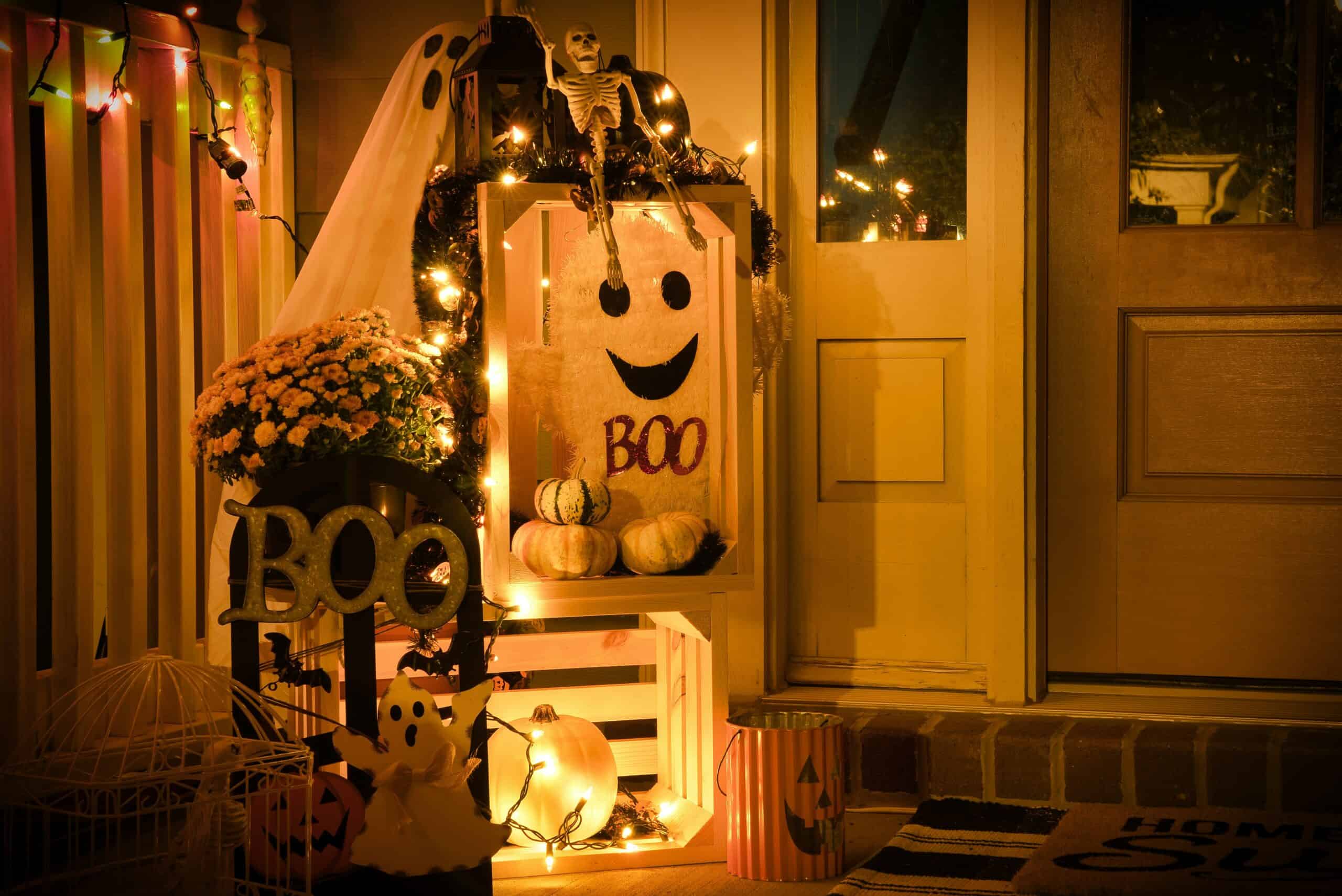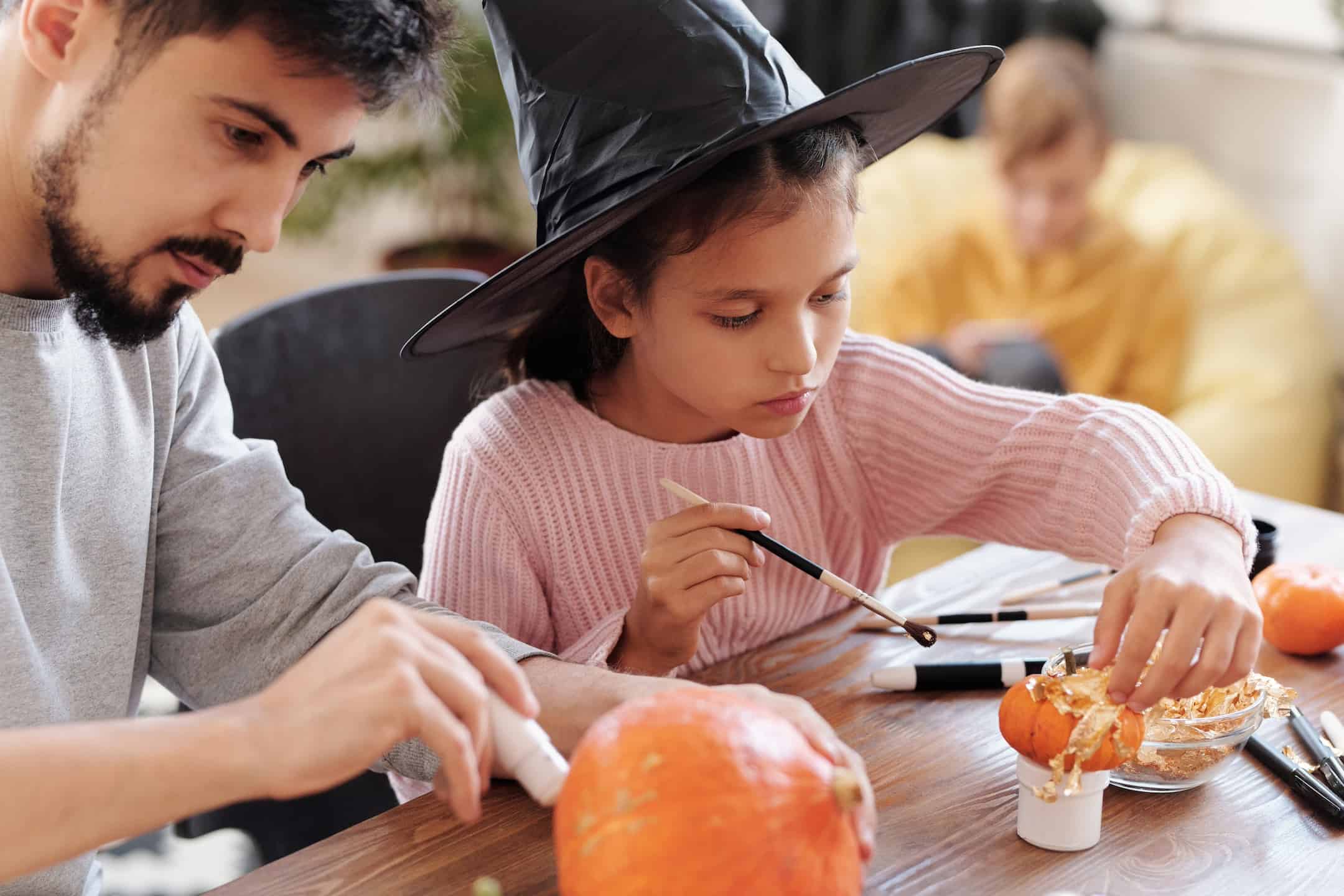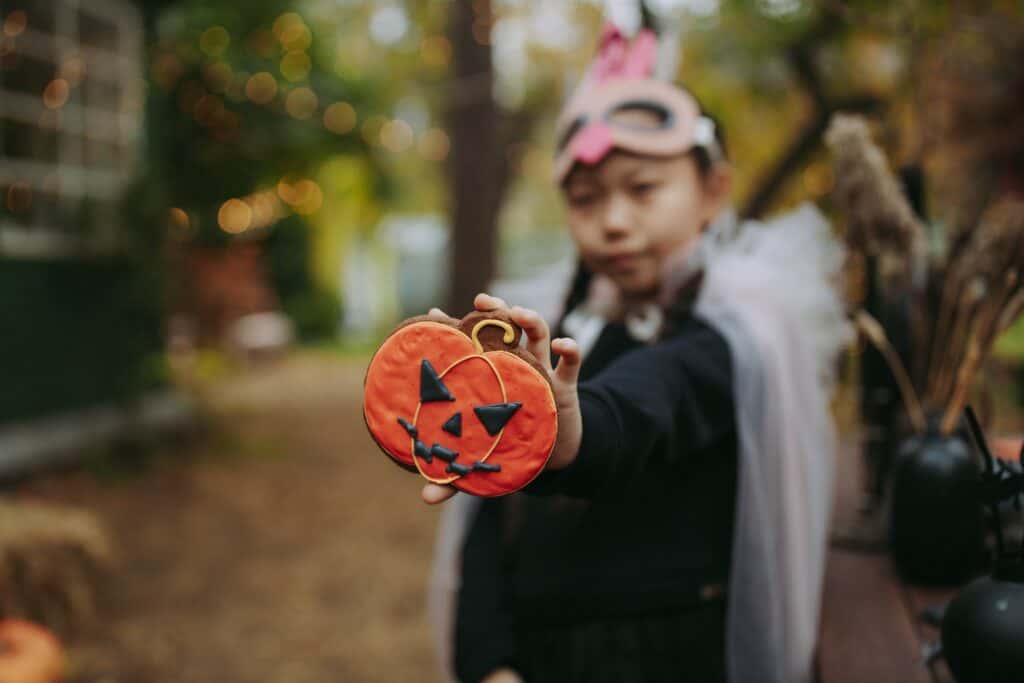With all the fun and excitement that comes with Halloween, for a sensory sensitive child, the activities and circumstances surrounding it may be overwhelming. Creating a sensory-friendly Halloween is possible for your neurodivergent child with a few strategic steps and approaches.
From costume alternatives to additional safety measures, here we share some of the ways you can best support yours or other neurodivergent children in your community during this spooky season.
4 Strategies to Making Halloween Sensory-Friendly
Costume Choices:
For a sensory-sensitive child, wearing something out of the ordinary or made from a material they are not used to can be difficult or overwhelming. Scratchy velcro, uncomfortable masks and sticky face paint are just a few of the challenges you may face when choosing a Halloween costume.
The first question to ask is: what does my child WANT to wear? Do they have a favorite character or item that they would like to dress up as? If they help choose their sensory-friendly Halloween costume, they may be more likely to wear it.
Another great way to keep your child’s costume sensory-friendly is to look for options that utilize regular clothing. From character hoodies found on Amazon to onesies from Target, look for options that feel more like what your child might wear every day (and they may even choose to wear it more than just one night!).
Spooky Decor:

Halloween decor is often intended to be spooky, creepy and a little bit scary. To reach this effect, it often includes flashing lights, unexpected movement and loud noises. All of these can be very scary and overwhelming for a child with sensory sensitivities. During the Halloween season, some of these images are unavoidable. Here are a few things you can do to help prepare your child for what they might see.
- Remind your child that the decorations are not real and that it’s ok to feel scared by them. Remind them that they cannot hurt them.
- Walk through a Halloween social story to share the types of decorations they may see throughout the season. Here is a great social story option for Halloween!
- If you choose to decorate your house for Halloween, give your neurodivergent child plenty of notice, talking them through what and when you plan to decorate. You can show them pictures of your previous year’s decor and you may consider asking them to be a part of the decorating process.
- Avoid homes or locations that are decorated in an overly scary way.
Alternative Activities:

Halloween activities can mean crowds and additional social pressures on a neurodiverse child. Visiting the homes of strangers may be too overwhelming, turning a fun evening of trick-or-treating into a stressful activity. Choosing a more sensory-friendly Halloween alternative may be the best way to help your child celebrate this holiday. Here are a few creative ideas to consider:
- Host a pumpkin-decorating party at your home.
- Host a virtual costume contest with friends.
- Consider a scavenger hunt or trunk-or treat event vs. traditional trick-or-treating.
- Join neurodiverse-inclusive events in your community.
- Choose Halloween themed arts and crafts as a calming and hands-on activity.
Plan Ahead:

Being prepared to support your neurodivergent child will help set them up for success on Halloween night. If it is appropriate, discussing the plan ahead of time with your child may be helpful. Some easy ways to prepare include:
- Bring snacks that are in line with their dietary needs. The amount of candy and treats at every turn can cause great distress for a child that cannot eat certain foods.
- Bring along their accessories and gadgets. Whether it’s their noise-canceling headphones or their favorite sensory toy, being prepared can help create a comfortable environment in the case of sensory overload.
- Know your route. Removing this unknown can help your neurodivergent child better enjoy Halloween. Walking the path a few times beforehand can offer reassurance and familiarity on Halloween night.
A great music therapy idea for planning ahead is using music to practice social and communication skills. With songs and instruments you can practice much for Halloween, learning skills like knocking on the door or saying phrases like “trick-or-treat” and “thank you”.
You may also consider leaning into the blue pumpkin trend. According to this article, blue pumpkins are used to signal families and caregivers that their child may be neurodivergent or have other sensory-sensitivities. The use of a blue candy bucket may be a great alternative to help signal to the homes you visit that your child may need extra support while trick-or-treating.
How Music & Art Therapy Can Help During Halloween

The benefits of music and art therapy can be a valuable tool during the spooky season. Your therapist will help promote connection and communication through creative Halloween experiences. Through themed, sensory-friendly activities, these sessions can help to foster family bonding around the holiday.
Healing Harmonies is here for you! We love providing you and your family with ongoing resources and tools for all ages. To have these delivered right to your inbox, visit our contact page to sign up for our newsletter!





